Quail, although sometimes underestimated as a pet, is gaining recognition as a wonderful addition to households globally. Their small size, friendly nature, and practical advantages make them an excellent choice for pet lovers. Let’s take a closer look at why quail are becoming popular pets and delve into the increasing trend of including them as part of the family.
Can I Keep Quail as a Pet?
Thinking about having quail as a pet? Let’s figure out if it’s the right choice for you.
If you’re someone who enjoys having small pets around and you’re ready to put in the effort to take care of them, quail could be a good match. They’re not too demanding and can adapt to different living situations, making them a good fit for many people.
But if you’re short on space, time, or resources, owning quail might not be the best idea. Quail needs enough room to move around, proper housing, and regular attention to stay happy and healthy. Plus, if there are strict rules about keeping pets in your area, you’ll need to make sure you can follow them before getting quail as a pet.
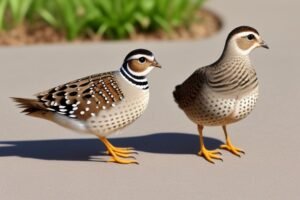
Legal Considerations and Regulations
Before embarking on quail ownership, it’s crucial to navigate the legal landscape. While regulations vary by region, understanding permits, zoning laws, and ordinances is essential.
Which species are commonly kept as a pet?
The species commonly kept as pets depend on your preference for eggs, meat, or companionship. Here are the category-based quail species:
1. Exploring Common Quail Species for Companionship
Japanese Quail (Coturnix japonica)
Japanese quail are renowned for their gentle nature, compact size, and remarkable egg-laying abilities, making them ideal companions for those seeking avian pets. They are well-suited for owners looking for a low-maintenance bird with a calm demeanor. Japanese quail thrive in environments where they receive regular interaction and gentle handling.
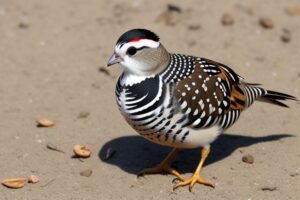
Button Quail (Coturnix chinensis)
Button quail, with their striking appearance, sociable tendencies, and unique habit of “quail dust bathing,” offer captivating companionship opportunities. They are perfect for bird enthusiasts seeking a small-sized pet with vibrant personalities. Button quail as a pet thrive in homes where they receive ample attention and interaction, making them suitable for owners willing to invest time in building a bond.

Characteristics of Companionable Quail Species
Companionable quail species, including Japanese and Button quail, share common traits such as sociability, adaptability, and ease of care. These birds are suitable for owners seeking avian pets with distinct personalities and interactive behaviors. They thrive in environments where they receive consistent care, attention, and opportunities for enrichment.
2. Best Egg-Laying Quail Species
Coturnix Quail (Coturnix coturnix)
Coturnix quail are renowned for their prolific egg-laying capabilities, providing a consistent supply of nutritious eggs for households. These small-sized birds are capable of laying approximately 200 to 300 eggs per year, translating to about 16 to 25 eggs per month. Their adaptability and high egg production rates make them a popular choice among backyard poultry enthusiasts.
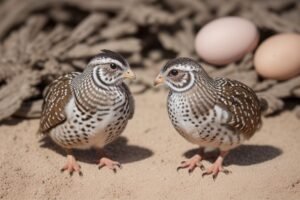
Bobwhite Quail (Colinus virginianus)
Bobwhite quail as a pet, known for their distinctive calls and rustic charm, also contributes to backyard ecosystems while offering fresh eggs. Although they have a lower egg production rate compared to Coturnix quail, typically laying around 50 to 100 eggs per year, they still provide a valuable source of eggs for households seeking both utility and companionship. This translates to approximately 4 to 8 eggs per month.
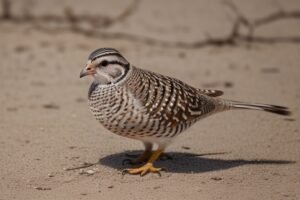
High-Yield Egg Layers: Characteristics and Benefits
High-yield egg-laying quail species, such as Coturnix and Bobwhite quail, offer a sustainable source of protein-rich eggs for households. Their efficient conversion of feed into eggs, coupled with minimal space requirements, makes them highly desirable for urban and rural settings alike. With proper care and management, these quail species can consistently provide a reliable source of fresh eggs throughout the year.
Management Tips for Maximizing Egg Production
To maximize egg production in quail, it’s essential to provide a balanced diet rich in protein and calcium, ensure optimal lighting conditions to mimic natural daylight cycles and maintain a stress-free environment. Regular monitoring of health and egg production, along with proper nesting facilities, contributes to overall flock productivity. By implementing these management practices, owners can optimize egg yield and ensure the well-being of their quail flock.
3. Best Meat-Producing Quail Species
Jumbo Coturnix Quail (Coturnix coturnix)
Jumbo Coturnix quail as a pet is prized for their robust size and tender meat, making them a valuable protein source for culinary enthusiasts. These quail exhibit rapid growth rates and can produce approximately 8 to 10 ounces of meat per bird, making them ideal for homesteads and small-scale farms.
Texas A&M Quail (Coturnix coturnix)
Texas A&M quail as a pet is specifically bred for optimal meat production, showcasing superior growth rates and desirable carcass characteristics. These quail typically yield around 7 to 9 ounces of meat per bird, known for their plump bodies and succulent meat, making them popular choices for culinary ventures and self-sufficiency initiatives.
Fact: Texas A&M University developed it through selective breeding programs. Hence the name “Texas A&M quail” denotes its origins and association with the university.
Meat-Quality Quail Breeds: Features and Advantages
Meat-quality quail breeds offer delectable culinary experiences while promoting self-sufficiency and sustainability. Their efficient feed conversion ratios and quick turnaround times make them valuable assets for individuals seeking to produce their protein. With proper care and management, these quail species can provide a consistent supply of high-quality meat for consumption.
Guidelines for Rearing Quail for Meat Production
Successfully rearing quail as a pet for meat production requires attention to various factors, including providing quality feed, spacious housing, and implementing humane handling practices. It’s essential to establish biosecurity measures to prevent disease outbreaks and maintain ethical standards to ensure optimal welfare and product quality. By following these guidelines, owners can effectively raise quail for meat production while upholding standards of animal welfare and sustainability.
Note: For quail food/diet, Food and nutrition.
4. Quail Species Suitable for Beginners
Button Quail (Coturnix chinensis)
Button quail are recognized for their ease of care and captivating personalities, making them excellent choices for novice owners. Their petite size and undemanding nature simplify the learning curve for individuals venturing into quail husbandry.
California Quail (Callipepla californica)
California quail are celebrated for their elegant appearance and adaptability, ideal for beginners seeking avian companionship. Their hardy disposition and sociable behavior foster rewarding interactions with owners of all experience levels.
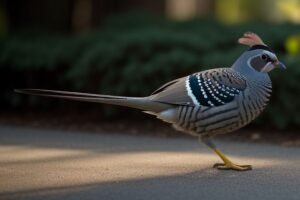
Beginner-Friendly Quail Species: Traits and Adaptability
Beginner-friendly quail species share traits such as resilience, adaptability, and ease of care. Their forgiving nature and straightforward husbandry requirements empower novice owners to embark on their quail-keeping journey with confidence.
Tips for Novice Quail Owners: Simplifying Care
Novice quail owners can enhance their pet care experience by prioritizing essential needs, seeking guidance from experienced breeders, and embracing a learning mindset. By focusing on basic care fundamentals, they can cultivate a fulfilling relationship with their feathered companions.
5. Quail Species Ideal for Indoor Living
California Quail (Callipepla californica)
California quail as a pet is a great fit for indoor living due to their stunning appearance and calm demeanor. Their moderate size means they don’t require a lot of space, making them perfect for apartment dwellers or those with limited outdoor areas. Plus, they’re known for being relatively quiet and don’t produce much odor, making them ideal housemates.
Gambel’s Quail (Callipepla gambelii)
Gambel’s quail as a pet is well-suited to indoor environments thanks to their friendly nature and adaptability. They enjoy socializing and can thrive indoors as long as they have enough space to roam and explore. Their melodious calls are pleasant rather than disruptive, making them suitable companions for urban living where noise can be a concern. Additionally, they don’t generate much odor, making them easy to live with indoors.
Why These Quail Are Suitable for Indoor Living
These quail species exhibit behaviors that make them compatible with indoor living. They’re tolerant of being confined to indoor spaces, produce minimal noise, and have low odor levels compared to other birds. Their adaptability to restricted environments ensures they can thrive indoors without compromising their well-being or causing disruptions to their human companions.
Understanding Quail Size and Lifespan
Quail Size Variation Across Species
Quail comes in various sizes, catering to different living environments and owner preferences. On average, quail measures between 6 to 10 inches in length, with some smaller breeds like the Button Quail measuring around 4 inches. Larger species such as the Gambel’s Quail can reach lengths of up to 10 to 12 inches.
Lifespan Expectancy
The lifespan of quail varies depending on factors such as genetics, habitat conditions, and care provided. On average, most quail species live for about 2 to 5 years in captivity. However, with proper care, some quail can exceed these expectations, living up to 7 years or more. It’s essential for owners to prioritize good nutrition, suitable living conditions, and regular veterinary care to ensure their quail live long and healthy lives.
Creating a Comfortable Home for Your Quail Pets
Step 1: Selecting a Suitable Enclosure
- Choose an enclosure with dimensions of at least 2 feet (60 cm) in height, 3 feet (90 cm) in length, and 2 feet (60 cm) in width to accommodate a small flock of quail comfortably.
- Ensure the enclosure has a secure door and is constructed with wire mesh or wood to provide adequate protection.
Step 2: Bedding and Flooring
- Line the bottom of the enclosure with approximately 2 inches (5 cm) of soft bedding material such as straw, hay, or wood shavings.
- Cover the bedding with a layer of sand or soil measuring about 1 inch (2.5 cm) in depth to facilitate dust bathing and natural behavior.
Step 3: Nesting Boxes
- Install nesting boxes or shelters within the enclosure, each measuring around 6 inches (15 cm) in height, width, and depth.
- Space the nesting boxes evenly throughout the enclosure to provide multiple options for your quail to lay their eggs.

Step 4: Perches and Enrichment
- Incorporate perches or branches at varying heights, with lengths of approximately 6-8 inches (15-20 cm), to accommodate roosting behavior.
- Add enrichment items such as hanging toys, mirrors, and shallow pans of water with diameters of around 6-8 inches (15-20 cm) to stimulate mental and physical activity.
Step 5: Feeding and Watering Stations
- Set up feeding and watering stations with shallow dishes or troughs measuring approximately 4-6 inches (10-15 cm) in diameter.
- Place the stations in easily accessible locations within the enclosure to allow your quail convenient access to food and water.
Step 6: Temperature and Lighting
- Ensure the enclosure maintains a temperature range of 65-75°F (18-24°C) using heat lamps or heating pads as needed.
- Provide natural or artificial lighting for 12-14 hours per day, adjusting the intensity to simulate daylight hours and promote healthy circadian rhythms.

Step 7: Predator Protection
- Surround the enclosure with wire mesh extending at least 1 foot (30 cm) underground and 2 feet (60 cm) above ground to prevent digging and climbing predators.
- Install locks or secure latches on doors and openings to deter predators from gaining access to the enclosure.
Step 8: Regular Maintenance
- Clean the enclosure weekly, removing soiled bedding and debris to maintain a hygienic environment for your quail.
- Inspect the enclosure regularly for signs of wear or damage, repairing any issues promptly to ensure the safety and security of your quail pets.
Pros of Keeping Quail as a Pet:
- Compact Size: Quail are small birds, making them suitable for households with limited space such as apartments or urban settings.
- Low Maintenance: Quail as a pet require minimal care compared to larger pets, with simple housing and feeding requirements, making them ideal for busy individuals or first-time pet owners.
- Egg Production: Certain quail species, like Coturnix quail, are prolific egg layers, providing a consistent supply of nutritious eggs for consumption.
- Pleasant Disposition: Quail are generally docile and gentle birds, often displaying curious and sociable behavior, fostering enjoyable interactions with their owners.
- Entertaining Behavior: Quail as a pet exhibit amusing behaviors such as dust bathing, foraging, and socializing, providing entertainment and companionship for owners.
- Educational Opportunities: Keeping quail as pets can be educational for children and adults alike, offering insights into avian behavior, biology, and care.
Cons of Keeping Quail as a Pet:
- Fragile Nature: Quail as a pet can be delicate birds, susceptible to stress-related illnesses and injuries, requiring careful handling and management.
- Short Lifespan: Compared to larger pet birds, quail have relatively short lifespans, typically living 2-5 years, which may lead to frequent turnover and emotional attachment challenges.
- Limited Petting: Quail as a pet is not typically receptive to petting or handling like dogs or cats, which may disappoint owners seeking tactile interaction with their pets.
- Space Requirements: While they are small, quail still need adequate space to thrive, necessitating appropriately sized enclosures that may not be feasible for all living situations.
- Regulatory Considerations: Depending on local regulations, keeping quail as pets may be subject to zoning laws, permits, and restrictions, adding complexity to ownership.
- Noise Level: While generally quieter than other poultry, quail can still vocalize, especially during mating season, which may disturb noise-sensitive individuals or neighbors.
Conclusion:
In summary, quail as a pet present a unique and rewarding option for pet ownership, blending practicality with companionship. Their diverse species cater to various preferences, from egg production to meat or simply as delightful household companions. While they require responsible care and adherence to regulations, the joy they bring outweighs the effort. Understanding their needs, providing suitable housing, and fostering bonds through interaction ensures a fulfilling experience. With their endearing personalities and manageable care requirements, quail offer a distinct and enriching addition to any household, promising years of companionship and joy.
FAQs:
Are quails good for beginners?
Quails, particularly species like Button Quail or California Quail, are great for beginners due to their manageable care requirements and gentle demeanor, making them an ideal introduction to avian companionship.
What is the lifespan of a pet quail?
Pet quails typically live around 2 to 5 years, depending on factors like species, genetics, and care provided, making them relatively short-lived compared to larger birds but still offering years of companionship.
Are quails noisy?
Generally, quails are not noisy pets. They produce soft chirping sounds and are much quieter compared to other birds like parrots, making them suitable for households where noise levels need to be kept to a minimum.
Can you have a quail as a pet?
Yes, you can have a quail as a pet. However, it's essential to check local regulations and ensure you can provide proper care, housing, and companionship to meet the needs of these charming birds.
What are the best quail species for indoor living?
Quail species like California Quail and Gambel's Quail are well-suited for indoor living due to their moderate size, calm demeanor, and adaptability to indoor environments, making them excellent choices for apartment dwellers or those with limited outdoor space.
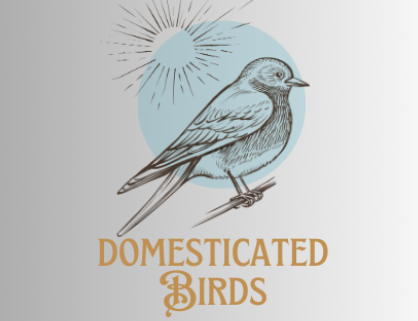
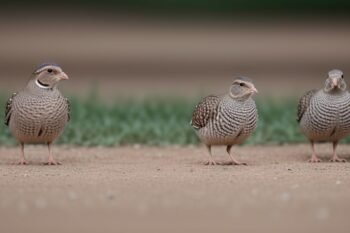
вывод из запоя дешево ростов-на-дону вывод из запоя дешево ростов-на-дону .